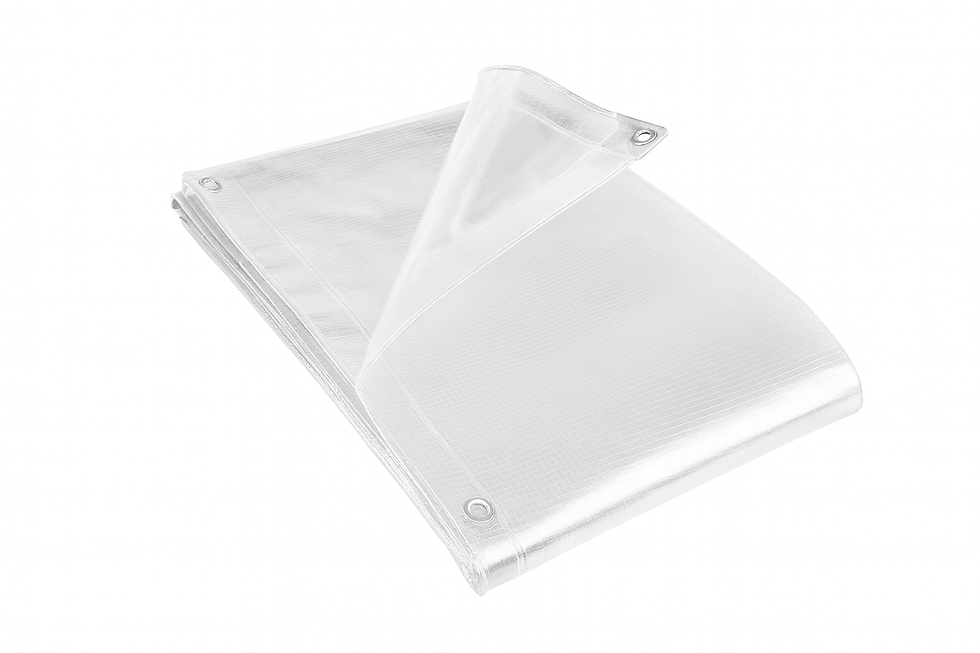Waterproof Tarpaulin: The Best Shield Against Rain and Moisture
- UK Tarps
- Nov 24
- 3 min read
Water can ruin a lot of stuff if they are not covered properly. When it rains and rainwater sits in the air, wooden, metal, fabric, or paper items can become weaker. This is precisely why waterproof Tarpaulins are everywhere. They provide a strong barrier to protect anything beneath from water. The design, fabric, and properties of waterproof tarps are what make them work efficiently when it is wet.
Why Waterproofing is Important in a Tarp
Waterproofing is not just about being dry; it means stopping water from getting into one of the small spaces inside the fabric. A typical tarp may withstand some moisture, but a waterproof tarp prevents it altogether. The fibers are woven tightly enough to prevent water drops from penetrating. Additionally, a waterproof coating seals any remaining small gaps.
When the tarp does not allow for water to absorb, it becomes safer to set up in the rain, storms, and even in areas where the ground remains wet for many hours. Without waterproofing, rainwater will seep in and create problems or damage what is stored under the tarp.
How Waterproof Tarpaulins Perform in Heavy Rain
Heavy rain can exert a lot of force as it falls. If your tarp is weak, it might sag, tear, or be prone to ponding in one place. A waterproof tarp is designed to withstand this pressure. The material stays firm and doesn't stretch too much. The coating on the tarp allows water to slide off the material instead of soaking into it.
Some tarps are engineered to dry fast after the rain stops. This is extremely useful to cut down the amount of time that the dampness sits on the tarp. When a tarp dries quickly, it inhibits the formation of mold and bad odors. This also preserves the life of the tarp and ensures the items below are protected.
Defending Against Moisture from the Air
Moisture doesn't only occur as rain. The air contains small droplets of water, especially in winter and humid areas. These droplets will slowly defeat metal, and the moisture will expand or decay wood. Waterproof tarps help to defend against the accumulation of moisture accumulation.
The surface does not allow moisture to stick for long on the surface. Any moisture on the surface of the tarp will simply slide off. This helps to slow down rusting, expansion, or mold growth. This protection can be very valuable in storage areas, garages, workshops, or outdoor settings.
The Function of a Strong Coating
A strong coating on a waterproof Clear Tarpaulin acts as a barrier. It closes small holes in the fabric and prevents the water from getting through. Coatings might include layers of polyethylene, PVC, or rubbery materials. The coatings remain strong even if the tarp is bent or folded.
The coating adds a level of smoothness to the surface. A smooth surface encourages rainwater to roll off faster during a storm. A smooth surface also makes it easier to rinse dirt and mud off the tarp without ruining the material. In addition, the coatings prevent sun exposure to the material, allowing the tarp to last longer.
Why Stitching and Edges Are Important When It's Wet
Rain and wind tend to attack the tarp at its weakest link: the edges and corners. Heavy-duty waterproof tarpaulins typically will have double-stitched (in the case of heavy-duty edges) reinforcing at the edge to minimize tearing if a water pool forms, or if the wind begins working on the edge of the tarp.
Grommets are also important because they hold the tarp in place; the holes are reinforced with metal or heavy-duty plastic to allow rope to pass without ripping the fabric. Once the tarp is tied down tightly, the rain cannot get behind the tarp as the thick edge keeps it from getting underneath.
Typical Uses of Waterproof Tarpaulins
Waterproof tarpaulins can be found and used in numerous surroundings because they fulfill a variety of requirements. Individuals use waterproof tarpaulins to cover outdoor gear, bicycles, small automobiles, and garden appliances. Farmers utilize them to safeguard crops or stored feeds from rainfall. Waterproof tarpaulins are used on a truck to prevent materials from getting wet during transport. Campers use waterproof tarpaulins to create shelters or shade during unfortunate rains.
At home, waterproof tarpaulins assist with painting or while doing home repairs after a roof leak. They can also protect patio or balcony furniture that is stored outside.
Conclusion
Waterproof Transparent Tarpaulin sheets are a simple but effective means to protect belongings from rain and moisture. What makes waterproof tarpaulins work is the combination of heavyweight fabric, tight looms, and unique coatings coming together to fully repel water. Whether you're expecting a passing rain shower or a rainy, humid stretch of weather, waterproof tarps perform admirably as a go-to portable waterproof barrier that will keep everything protected and dry beneath.




Comments